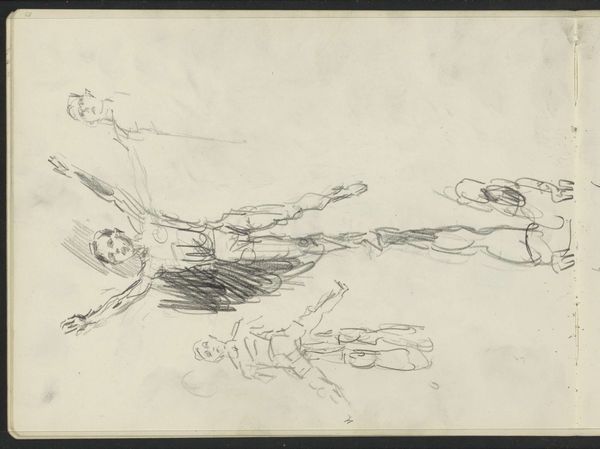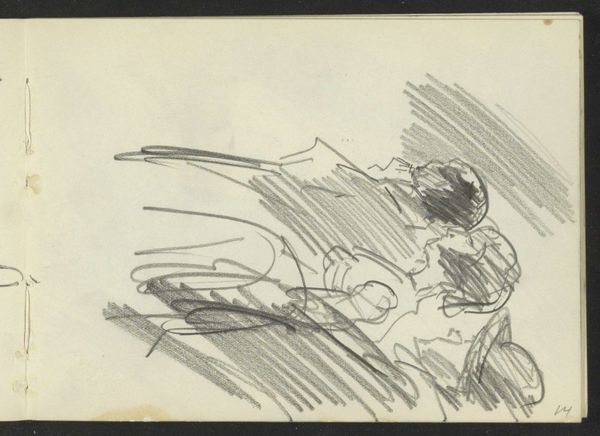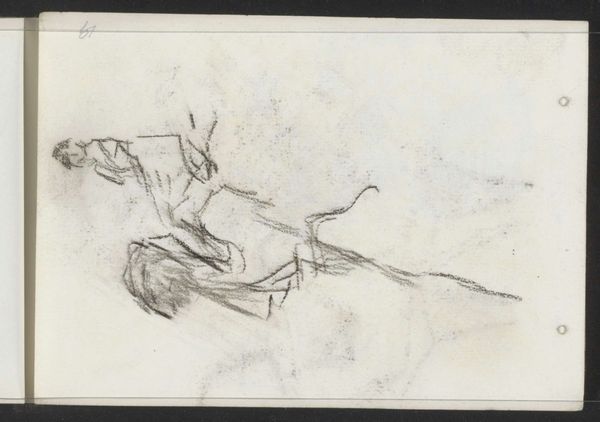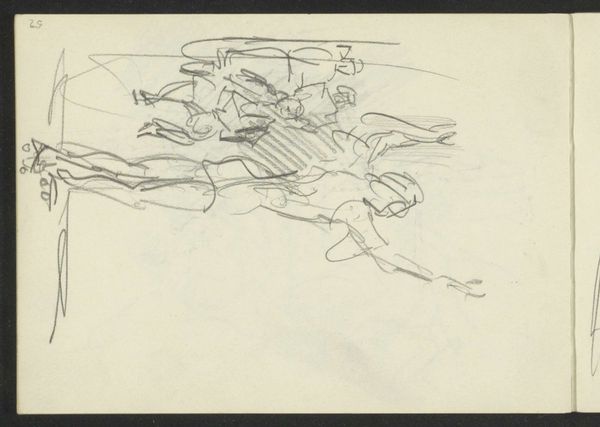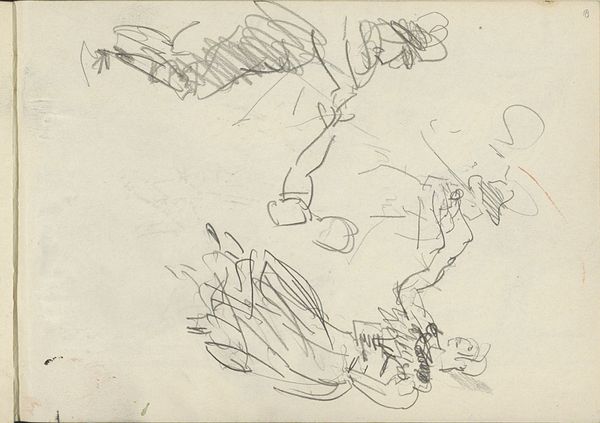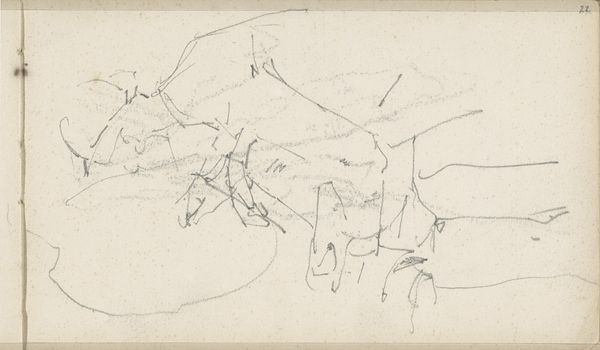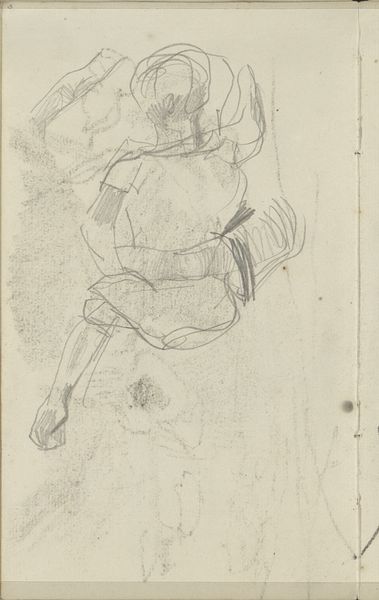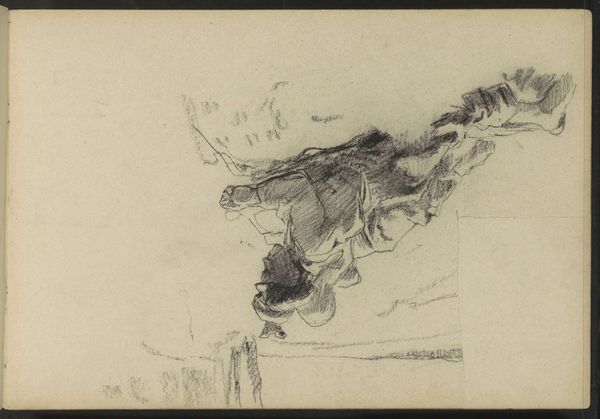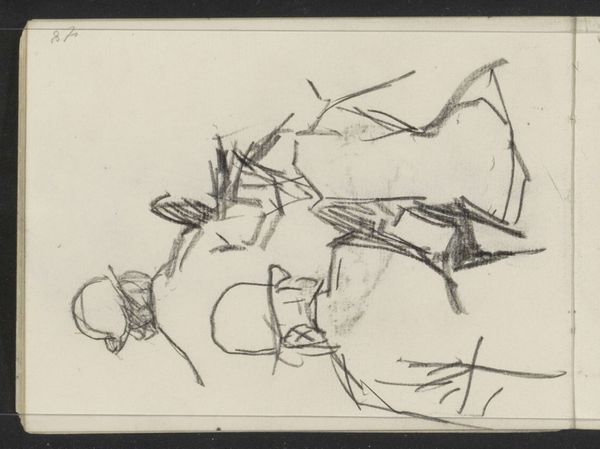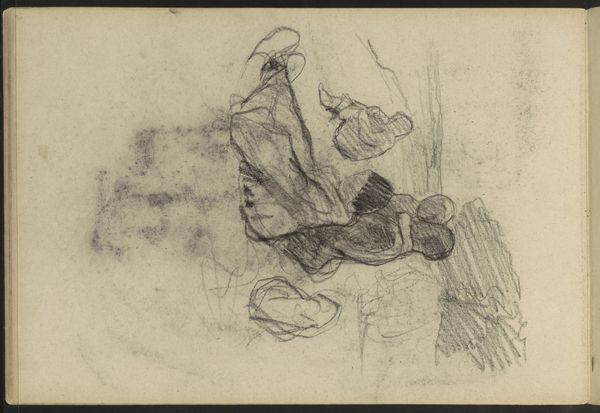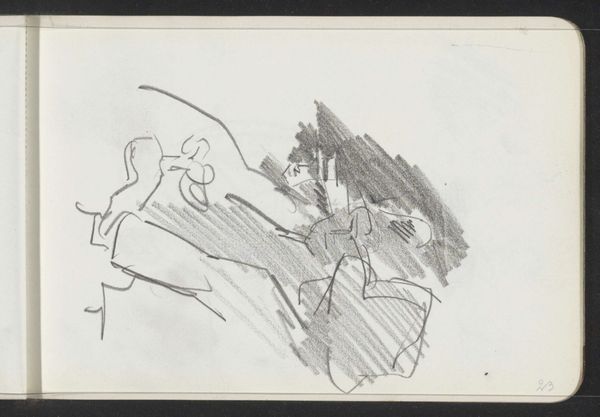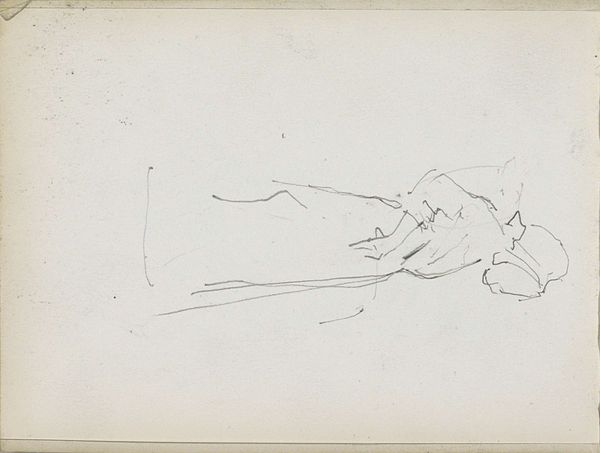
drawing, pencil
#
portrait
#
drawing
#
dutch-golden-age
#
figuration
#
pencil
#
realism
Dimensions: height 99 mm, width 163 mm
Copyright: Rijks Museum: Open Domain
Curator: This is George Hendrik Breitner’s "Liggende man, mogelijk Willem van Beelen," a pencil drawing made between 1880 and 1882. The artwork resides here at the Rijksmuseum. Editor: My initial thought is that this feels incredibly intimate. The looseness of the pencil strokes gives the impression of catching a fleeting moment. Curator: Breitner was deeply interested in portraying everyday life. His choice of such accessible and direct mediums—photography and drawing—mirrors this intention to capture unfiltered reality. Willem van Beelen, the possible subject, was likely a figure from Breitner’s immediate circle. The quick strokes would be perfect for rapidly jotting down poses and gestures as studies. Editor: Yes, notice how Breitner uses hatching and varied line weights to create form and shadow with almost sculptural deftness, emphasizing key aspects like the subject's face and clothing, inviting close scrutiny. The off-kilter composition creates a dynamic tension within the confined picture plane, demanding visual resolution, thus enhancing the realism. Curator: And within Breitner’s artistic circles, there were discussions about what constituted art. By selecting a casual, private moment—a man simply resting—Breitner challenged academic traditions and blurred the lines between a quick study and a finished portrait. He validated labor outside conventional settings. Editor: Furthermore, his deliberate fragmentation of the subject, seemingly cut off at the edges, pushes past simple mimetic representation; his strategic omissions engage the viewer’s mind to fill the narrative voids, creating intellectual activity within our aesthetic apprehension. Curator: Absolutely, the materiality of the work—the visible pencil strokes on paper—speaks to the conditions of its production, reminding us of the artist’s hand and his engagement with a working-class milieu. Editor: By shifting attention from mere representation to the artist’s subjective interpretation through formal composition, line and shadow become more than mere representation. Instead, the work invites active construction and interpretation, a unique aesthetic conversation, so to speak, with its perceiver. Curator: Exactly, Breitner's work encourages an examination beyond the purely visual to question the social fabric of his time, challenging viewers to think about the labor, life, and leisure outside of conventional portraiture. Editor: It does reveal complexity. And these artistic encounters certainly offer fresh insights.
Comments
No comments
Be the first to comment and join the conversation on the ultimate creative platform.
